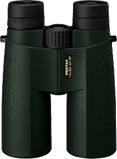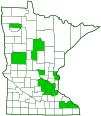Lacy phacelia
(Phacelia tanacetifolia)
Conservation • Description • Habitat • Ecology • Use • Distribution • Taxonomy
Conservation Status |
|||
| IUCN Red List | not listed |
||
| NatureServe | N3N4 - Vulnerable to Apparently Secure |
||
| Minnesota | not listed |
||
Description
Lacy phacelia is an attractive, non-native, flowering plant. It is native to southwestern United States and northern Mexico. It has been intentionally introduced throughout the United States, southern Canada, and Europe. It is adventive in Minnesota, occasionally escaping, and possibly establishing a local population. However, neither the plants nor the seeds survive the winter.
In its native range, lacy phacelia is found on sandy to gravelly slopes and in open areas. In other areas it is cultivated as a garden ornamental, a cover crop, a green manure, and as a bee plant for honey production. It attracts beneficial insects, including hoverflies (family Syrphidae), which feed on aphids and are a useful biological control agent.
Lacy phacelia is an annual, herbaceous, scorpionweed. It rises on an unbranched or few-branched stem from a taproot and dense fibrous roots.
The stem is erect and 6″ to 40″ (15 to 100 cm) in height. It is covered with more or less short, stiff hairs and with minute, fine, short, glandular hairs.
The leaves are alternate, oblong to egg-shaped, and ¾″ to 8″ (20 to 200 mm) long. The leaf blades are longer than the leaf stalks (petioles). They are usually pinnately divided into leaflets arranged on opposite sides of a central stalk (pinnate). They look much like the leaves of common tansy. This is the feature that gives the plant both its species epithet, tanacetifolia, and one of its common names, tansy scorpionweed. The leaflets are toothed to pinnately lobed
The inflorescence is a dense, flat or rounded, usually 2 to 4 branched flower cluster at the end of each stem. Each inflorescence branch is a coiled, one-sided, dense, fiddle-head arrangement (cyme) of many short-stalked flowers. The flowering time is March to May in its native range, but in other areas it flowers as late as October.
Each flower has 5 outer floral leaves (sepals), 5 petals, 5 stamens, and 1 style. The sepals are united at the base, forming a short tube (calyx), and separated into 5 more or less linear, ⅛″ to ¼″ (4 to 6 mm) long lobes. The lobes are densely covered with long hairs. The corolla is widely bell-shaped, blue, lavender, or bluish purple, and ¼″ to ⅜″ (6 to 9 mm) in diameter. The petals are fused at the base into a short tube then separated into 5 lobes. The lobes are densely hairy outside, hairless inside. The margins are entire, not notched or irregular (erose). The stamens and style are very long, extending far beyond the petals. The stalks (filaments) are ⅜″ to ⅝″ (9 to 15 mm) long, purple at the base, fading to almost white at the tip. There is a pair of small scales fused to the base of each filament. The style is 7⁄16″ to ⅝″ (11 to 15 mm) long. It is split (cleft) for two-thirds to three-quarters of its length.
The fruit is a more or less egg-shaped, ⅛″ (3 to 4 mm) long capsule, usually with just 1 or 2 seeds, sometimes up to 4 seeds. The capsule is minutely hairy to short hairy toward the end. The calyx and the corolla persist as the fruit develops. The persistent calyx lobes are ¼″ to 5⁄16″ (6 to 8 mm) long.
Height
6″ to 40″ (15 to 100 cm)
Flower Color
Blue, lavender, or bluish purple
Similar Species
Habitat
Sandy to gravelly slopes, open areas
Ecology
Flowering
March to October
Pests and Diseases
Use
Garden ornamental, cover crop, and to attract beneficial insects
Distribution |
||
|
Sources Biodiversity occurrence data published by: Minnesota Biodiversity Atlas (accessed through the Minnesota Biodiversity Atlas Portal, bellatlas.umn.edu, 10/27/2025). |
|
| 10/27/2025 | ||
Nativity |
||
Native to southwestern United States and northern Mexico. Cultivated. Adventive in Minnesota. |
||
Occurrence |
||
|
||
Taxonomy
Kingdom
Division
Tracheophyta (Vascular Plants)
Subdivision
Spermatophytina (Seed Plants)
Class
Order
Boraginales (borages)
Family
Boraginaceae (borage)
Subfamily
Hydrophylloideae (baby blue eyes, phacelias, and waterleaves)
Genus
Phacelia (scorpionweeds)
Subgenus
Phacelia
Section
Ramosissimae
Subordinate Taxa
Synonyms
Phacelia commixta
Phacelia tanacetifolia ssp. alba
Phacelia tanacetifolia var. cinerea
Phacelia tanacetifolia var. genuina
Phacelia tanacetifolia var. pseudodistans
Phacelia tanacetifolia var. tenuifolia
Phacelia tenuifolia
Phacelia tripinnata
Common Names
blue tansy
facelia
fiddleneck
lacy phacelia
lacy scorpionweed
lacy scorpion-weed
purple tansy
tansy scorpionweed
tansy-leaf phacelia
Glossary
Calyx
The group of outer floral leaves (sepals) below the petals, occasionally forming a tube. Plural: calyces.
Corolla
A collective name for all of the petals of a flower.
Cyme
A branched, flat-topped or convex flower cluster in which the terminal flower opens first and the outermost flowers open last.
Linear
Long, straight, and narrow, with more or less parallel sides, like a blade of grass.
Petiole
On plants: The stalk of a leaf blade or a compound leaf that attaches it to the stem. On ants and wasps: The constricted first one or two segments of the rear part of the body.
Pinnate
Having the leaflets of a compound leaf arranged on opposite sides of a common stalk.
Sepal
An outer floral leaf, usually green but sometimes colored, at the base of a flower.
Visitor Photos
Share your photo of this plant.
This button not working for you?
Simply email us at info@MinnesotaSeasons.com.
Attach one or more photos and, if you like, a caption.
Bill Reynolds |
||
I believe this is a Common Looper Moth. It was nectaring on Lacy Phacelia. |
||
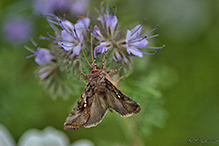 |
 |
|
It's a big hit with many types of insects including the fall migrating Monarchs. |
||
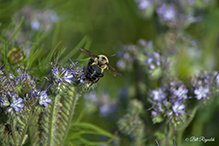 |
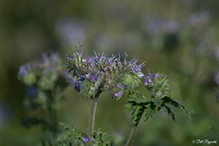 |
|
MinnesotaSeasons.com Photos
|

Slideshows
Phacelia tanacetifolia
qetsjexn67
Phacelia tanacetifolia
sierrarainshadow
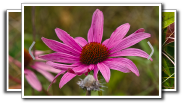
Visitor Videos
Share your video of this plant.
This button not working for you?
Simply email us at info@MinnesotaSeasons.com.
Attach a video, a YouTube link, or a cloud storage link.
Other Videos
Fun facts about blue tansy (Phacelia tanacetifolia) [4K]
Janos AGOSTON, Dr.
Bzzzzz....bees LOVE phacelia!
Brigit Strawbridge
Lacy Phacelia (Phacelia Tanacetifolia) - 2012-09-16
Westdelta
Phacelia tanacetifolia for organic gardening
West Coast Seeds
Bees on Phacelia tanacetifolia
Phil Chandler: Barefoot Beekeeper

Visitor Sightings
Report a sighting of this Plant.
This button not working for you?
Simply email us at info@MinnesotaSeasons.com.
Be sure to include a location.
Bill Reynolds
10/4/2025
Location: Numedal TWP., Pennington Co., Minnesota
It's a big hit with many types of insects including the fall migrating Monarchs.
MinnesotaSeasons.com Sightings
